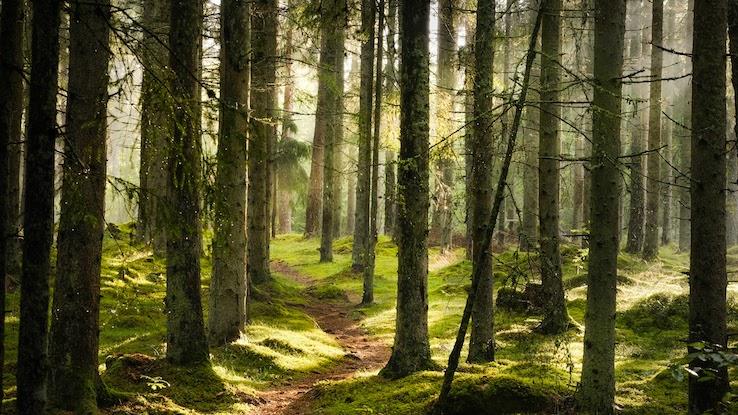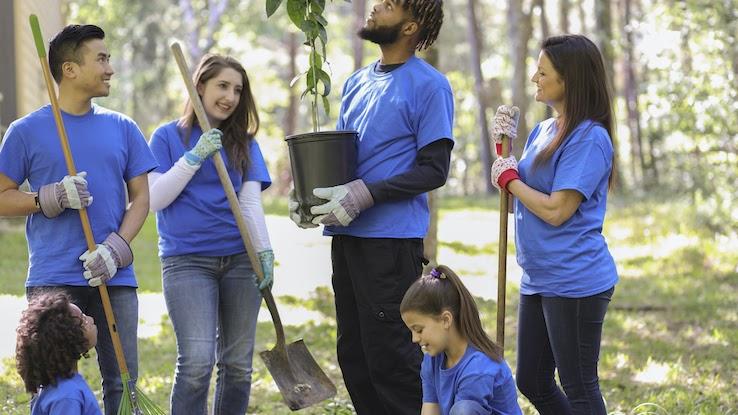See the Forest for the Trees: The Fascinating History of Arbor Day

When you think of environmental holidays, Earth Day is probably the first one that comes to mind. But right around the same time of the year, people across the globe are also celebrating another important environment-centric occasion: Arbor Day. This holiday — which encourages people to plant trees in an effort to beautify communities, promote knowledge of indigenous plant life and highlight the vital roles trees play in keeping our world healthy — is meaningful, but it also has a fascinating history. In fact, Arbor Day is so meaningful that what started humbly as a tree plantation festival in a small Spanish town in the 1500s is now a worldwide celebration.
In the United States, Arbor Day is celebrated on the last Friday in April. Many countries observe Arbor Day on different dates, which often coincide with the best tree-planting seasons in their locations. If you’re thinking about celebrating the holiday this year — or you simply want to know more about the wonderful ways we honor our environment — learn more about how and why people around the globe commemorate Arbor Day.
What Exactly Is Arbor Day?
Arbor Day is a separate celebration from Earth Day, though they both pay tribute to nature. The purpose of Arbor Day is to encourage people to plant trees as a celebration of all the amazing ways trees are vital to the global environment.

Trees happen to be the largest plants on the planet — and we also happen to need them to survive. They not only provide oxygen so we can breathe, but they also store carbon. This is crucial in a world where so much carbon dioxide is continually released into the atmosphere that Earth could become unlivable due to the climate change that’s resulting from this phenomenon. Thanks to the trees that store much of the carbon dioxide humans and their machines produce, our planet maintains a greater degree of livability than it otherwise would. Without trees, life on Earth as we know it could eventually go extinct. And that’s not to mention the multitude of other practical purposes they serve, from providing lumber we can use to build homes and furniture to housing diverse ecosystems to making our neighborhoods more beautiful places to live.
Arbor Day Has a Longer History Than You Might Expect
This may come as a surprise, but the first known celebration of trees in the world took place in Mondoñedo, Spain, in 1594. The mayor of the town organized a plantation festival, and villagers gathered together to plant trees that likely included lime and horse chestnut varieties. A few hundred years later in 1805, the first modern festivities for Arbor Day took place in Villanueva de la Sierra, Spain, at the urging of a local priest. This occasion marked the first time Arbor Day was officially recognized as a tribute to the importance of trees for people and the planet, with groups gathering to plant poplars and hosting a feast afterwards.

The United States celebrated its first Arbor Day on April 10, 1872, in Nebraska City, Nebraska. Decades earlier, journalist Julius Sterling Morton had relocated to Nebraska with his wife and purchased 160 acres of barren plains in Nebraska City. There, the family began planting a large variety of trees and other plants to beautify the land. Once Morton started employment as the editor of Nebraska’s first newspaper, he found that he had the ideal platform from which to begin educating readers about the importance of trees and plants in a state that was largely unforested.
By January of 1872, Morton had advanced in his career to become Secretary of the Nebraska Territory, where he proposed to Nebraska’s State Board of Agriculture a holiday dedicated to planting trees. He called it “Arbor Day” and argued that Nebraska needed more trees for a variety of reasons — they provided windbreaks, they kept the soil fertile, they provided building materials and fuel, and they provided much-needed shade in the heat of the searing Midwest summer sun.
A few months later, the first Arbor Day had a glorious kickoff during which over one million trees were planted in Nebraska. Part of the amazing turnout and enthusiasm for the holiday had to do with the fact that people who planted trees properly were offered prizes.
By 1882, Arbor Day’s popularity had spread far and wide, and it was celebrated in many states across the country. By 1885, Arbor Day had also become an official state holiday in Nebraska. At the time, the holiday was celebrated in Nebraska every April 22 — the period of year when the weather is ideal for planting saplings. As an added bonus, that date was also Morton’s birthday.
By 1883, another agricultural enthusiast, Birdsey Northrop, helped to spread Arbor Day to Japan, and later, to Canada, Australia and Europe. Most of the United States was celebrating Arbor Day by the turn of the century; however, somewhat interestingly, Arbor Day didn’t become a nationally recognized holiday until the 1970s, when a number of environmental challenges came into national focus and various ecological laws and policies were adopted.
Arbor Day Celebrations Around the World
Celebrating Arbor Day has become a particularly popular activity in schools around the world, regardless of whether the country recognizes the occasion as a holiday or not. Typically, teachers inform students about the importance of trees, and some schools even host tree-planting festivities and field trips of their own.

Many countries that recognize Arbor Day do have official celebrations to encourage widespread planting of trees. For instance, in India, Arbor Day is actually celebrated as a festival over a whole week in July, during which people plant millions of trees. Riverton City, Utah, hosts an annual Arbor Day Tree Planting Workshop in which experts teach people how to plant and grow trees. Attendees also learn about which trees are best for the soil in the area.
How You Can Participate
Part of the beauty of Arbor Day is that you can celebrate it in many ways. You might head outside and plant a tree or two, or you could also simply spend the day appreciating the outdoors, sitting in a park or going on a nature hike. Another way to pay tribute to the trees is to donate to an organization that supports local forest and plant health. This could be anything from a local arboretum to an international organization that works to preserve rainforests. Consider organizing an online fundraiser to get more people you know involved and donating money to a worthy cause.

Want to celebrate Arbor Day with a group? Check to see if there are any public activities happening in your area. Many cities and towns host public tree-planting activities and workshops to commemorate the day. Other Arbor Day events often involve picking up litter in your town or going on walks with a docent to learn about identifying local trees. You could also volunteer at a local nature organization.
Many national and local organizations give out free seeds that individuals and groups can plant in honor of Arbor Day. If you’re interested in becoming a member of the Arbor Day Foundation, you can also receive 10 free trees to plant.





